Sharks in the Philipines: Threats
Stamps Howard,Shark Finning and Fishing in the Philippines
International trade in whale shark meat is believed to support the market in Taiwan and anecdotal evidence from the Philippines suggests there are markets for whale shark meat in Hong Kong, Singapore and Japan.
Processed forms of shark meat are often used in the domestic production of minced fish products, including fish balls, fish sausage, tempura, artificial crabs or scallops and fish “ham”.
In the Philippines, fins of guitarfishes are highly preferred and earn some USD 110 per kg for the fishers. The Philippines is also reported to be one of the major suppliers of blacktip reef sharks to the Middle East and whale shark fins to other Asian countries. While data for the last couple of years is missing, the existing data shows that the production of shark fin in the Philippines is rising sharply:
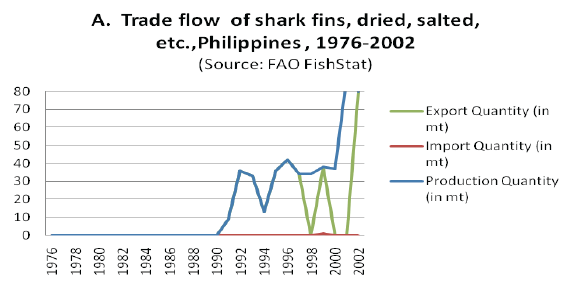
Australia, Brunei, China, Hong Kong, Japan, Korea, Singapore, Taiwan import dried unsalted fins. However, Hong Kong is the main destination, receiving about 90% of total traded commodity. The existing trade data does not identify sharks to the species level. Only those species protected in CITES cannot be traded, and only the whale shark and manta are protected nationally in the Philippines (see page 59 of the Phil NPOA-Sharks document
Wildlife Trade
Stuffed sharks that are allegedly from the Philippines are sold online through websites like Sea Life Gifts and Sulit.com.
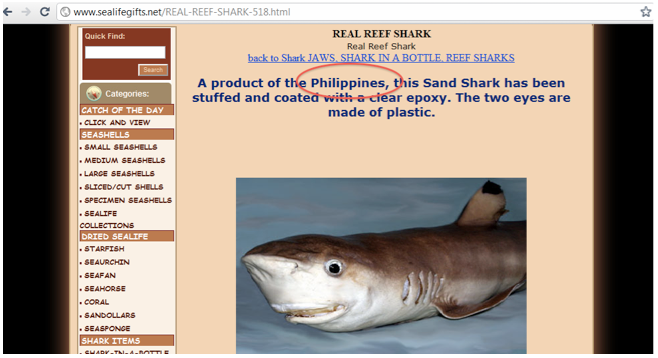
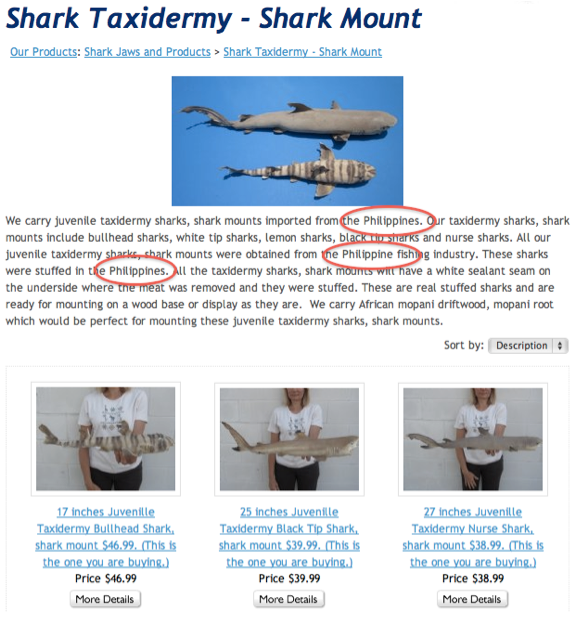
Of the nine categories in the IUCN Read List, three are categories of threat: Critically Endangered (CR), Endangered (EN), and Vulnerable (VU). The 2006 IUCN Red List found that 32 of the globally threatened Shark and Ray species are found to occur in the Philippines (i.e. those listed as Critically Endangered, Endangered, or Vulnerable).
By-Catch
The Phil NPOA-Sharks document shows a graph of “Relative abundance of target and non-target species groups in tuna longline fishery, March 2007.” This graph shows that sharks account for 24% of total volume while tuna is only 9%.
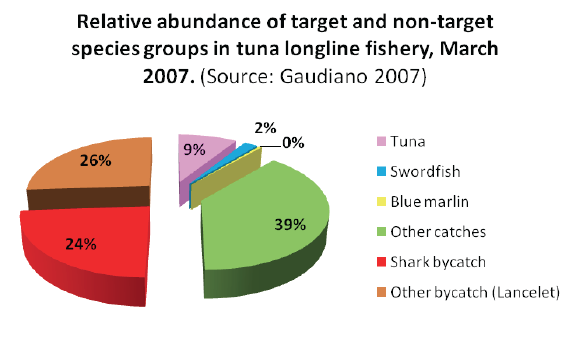
Shark Oil
The Phil NPOA-Sharks document shows a graph of “Relative abundance of target and non-target species groups in tuna longline fishery, March 2007.” This graph shows that sharks account for 24% of total volume while tuna is only 9%.

Another example is Precious Squelene. Below is a screenshot of the Precious Squalene (Philippines Deepsea Dogfish Shark Liver Oil) from a Facebook Page taken on November 28, 2011.
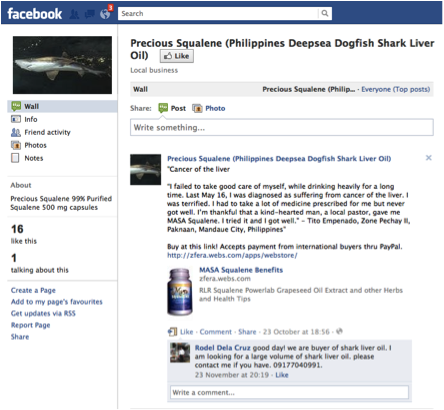
About 60-80 sharks (piked dogfish) are caught in one boat to makes 151 liters of crude oil. In total, some 800-1000 sharks are caught to fill gasoline drums of approximately 200L each. Most exports of shark oil are to Japan and South Korea. Hong Kong and Taiwan also import shark fin oil from the Philippines.